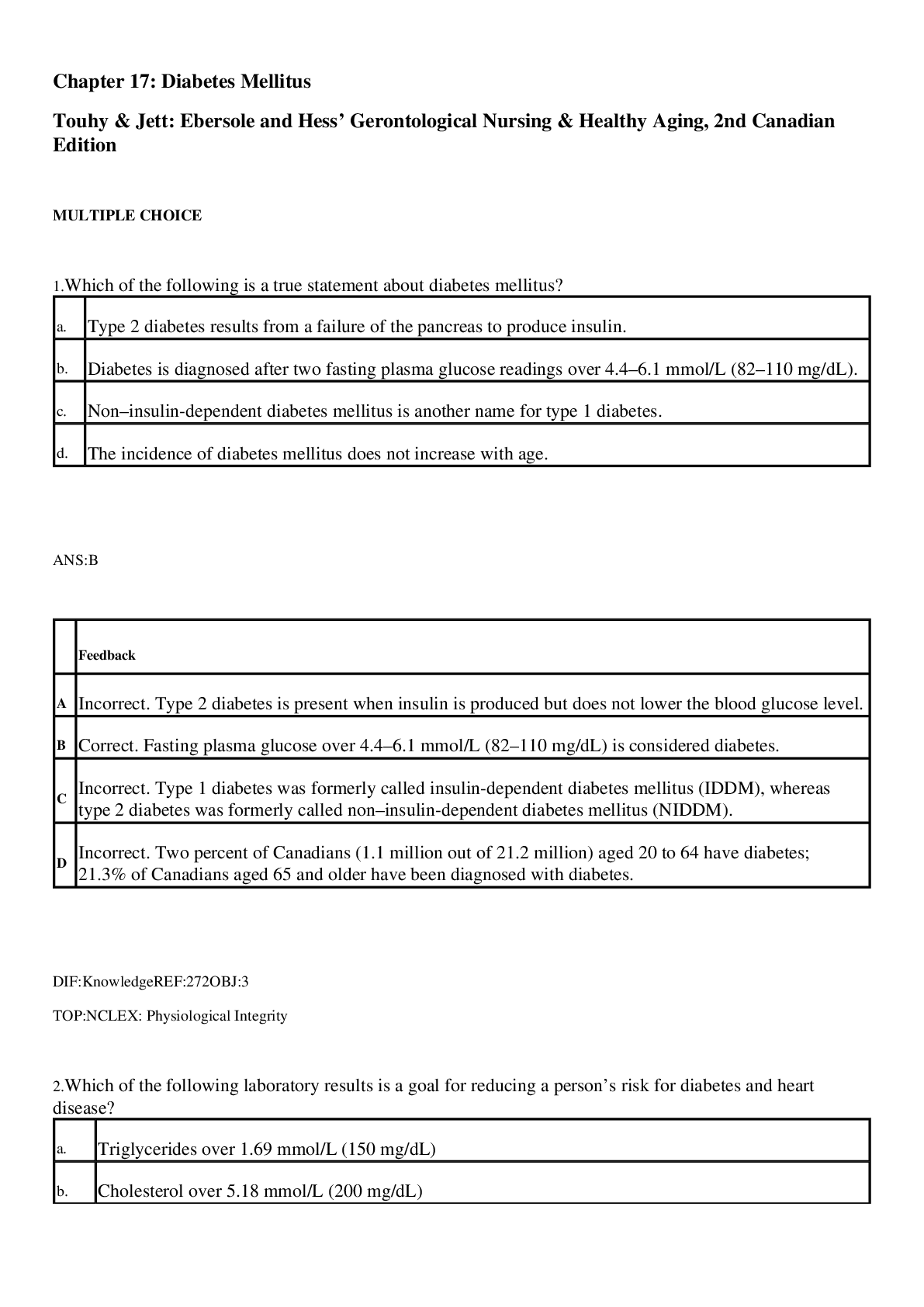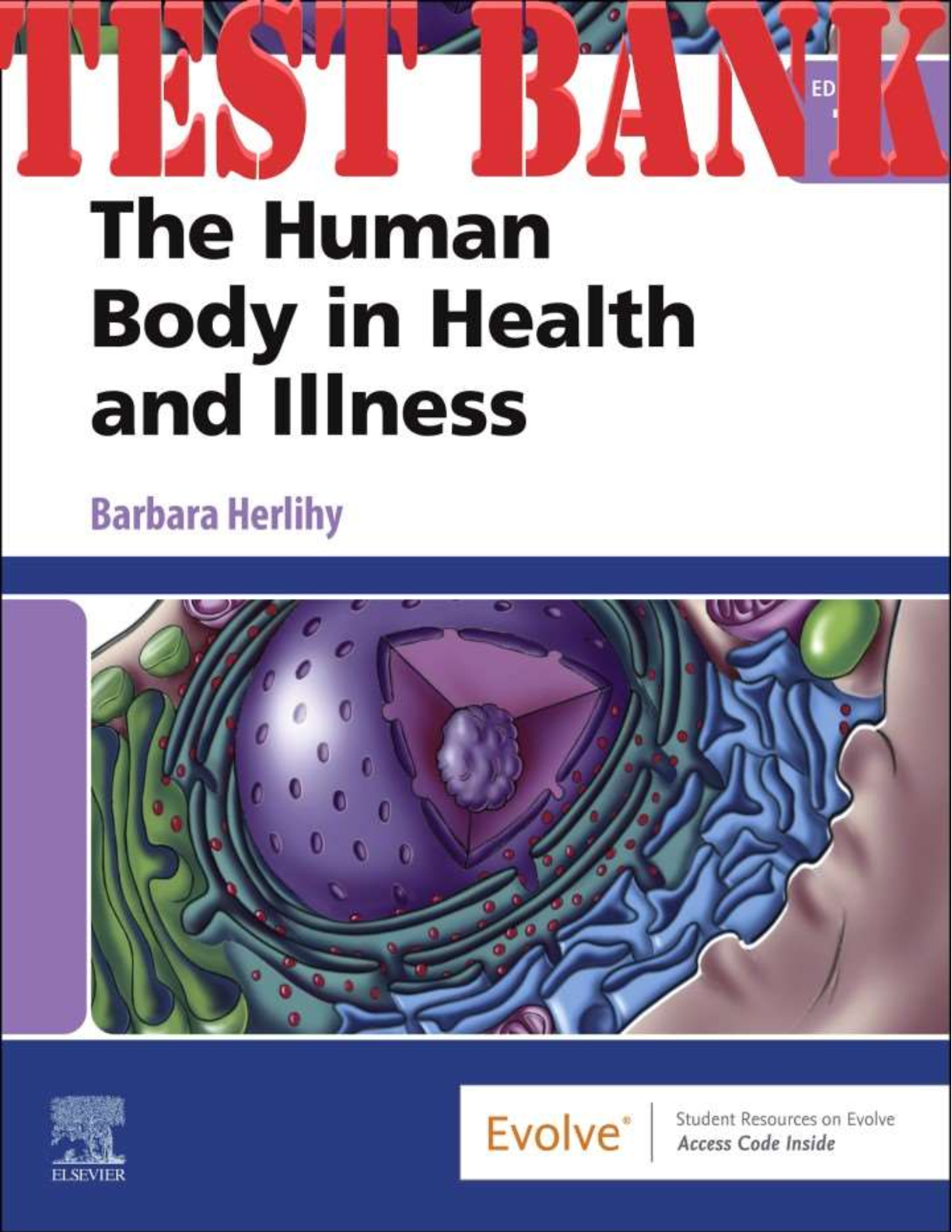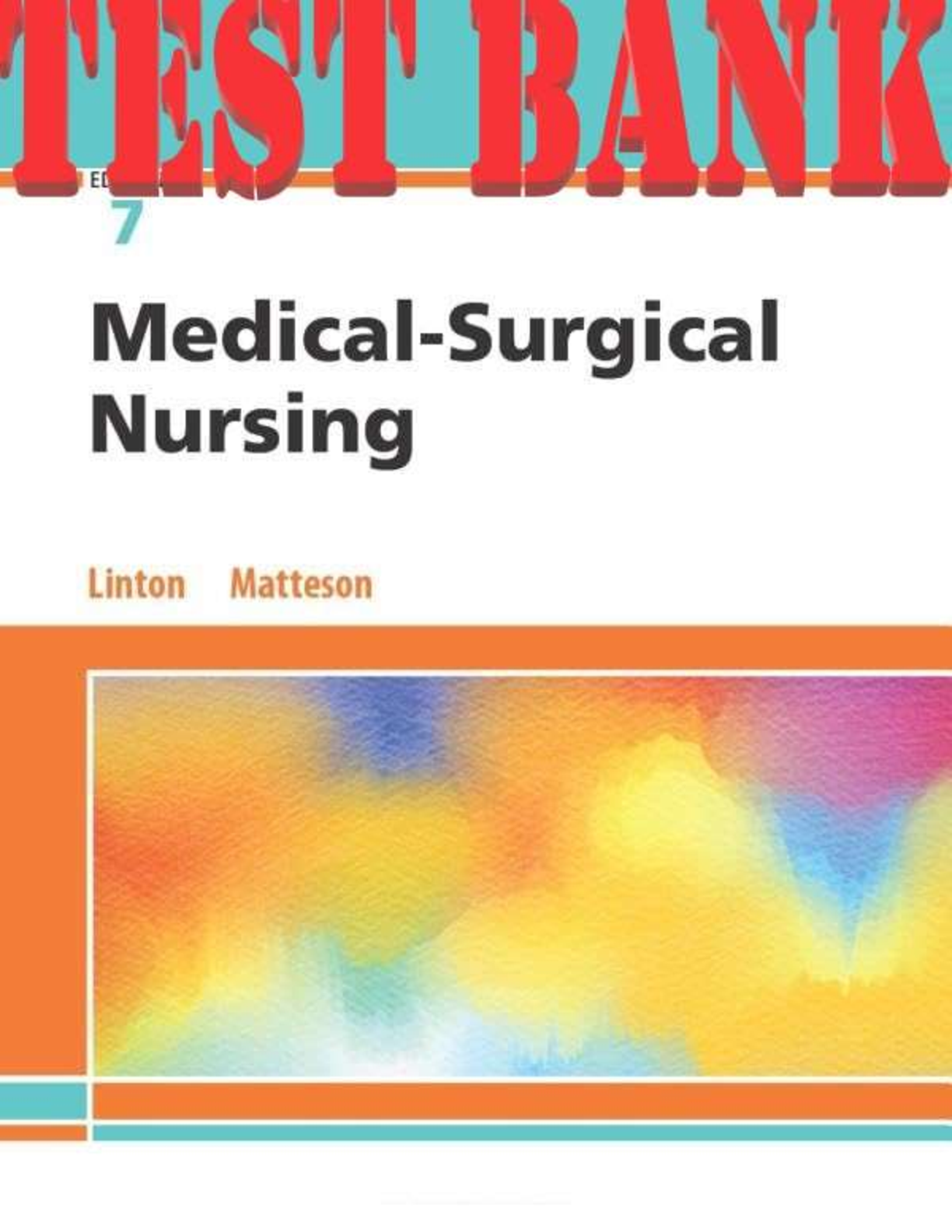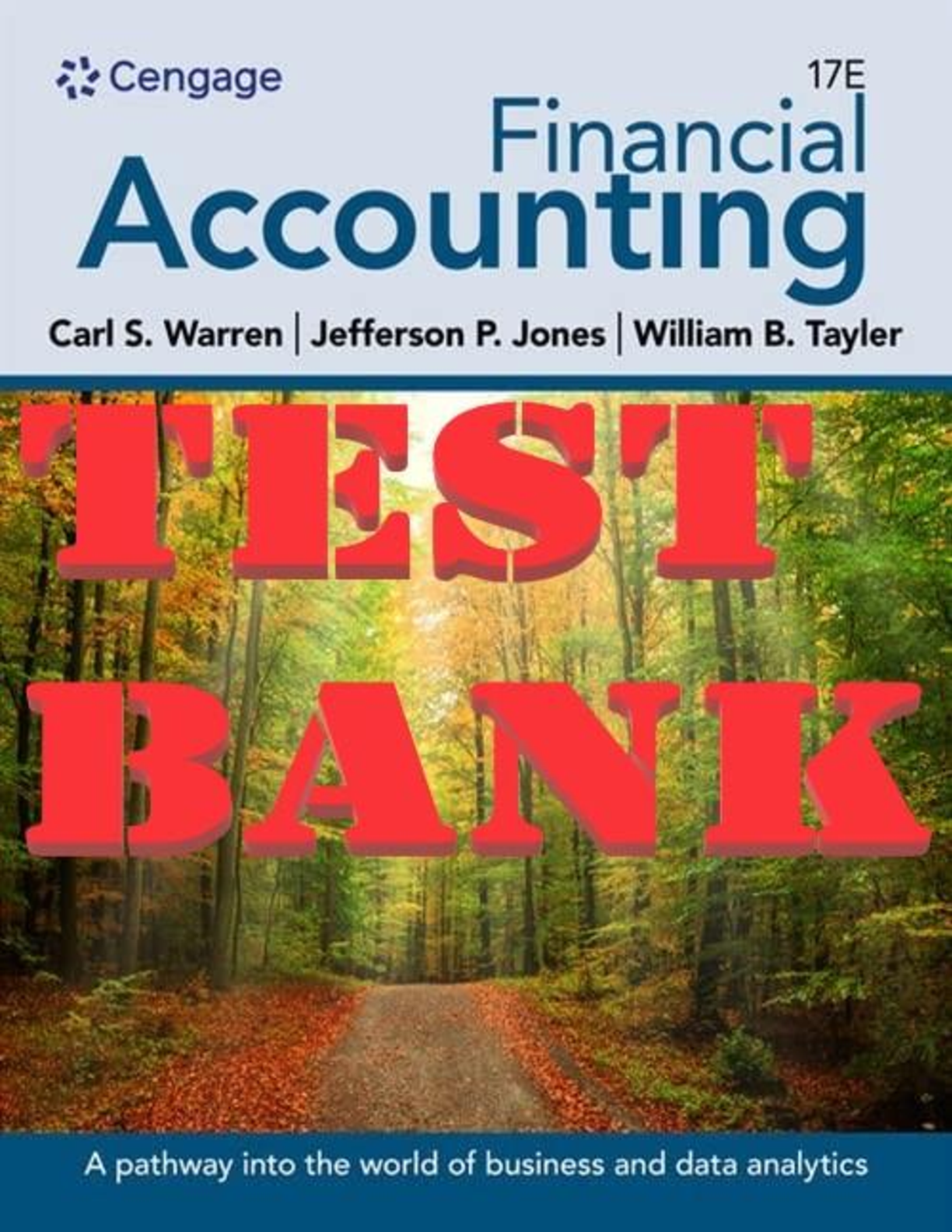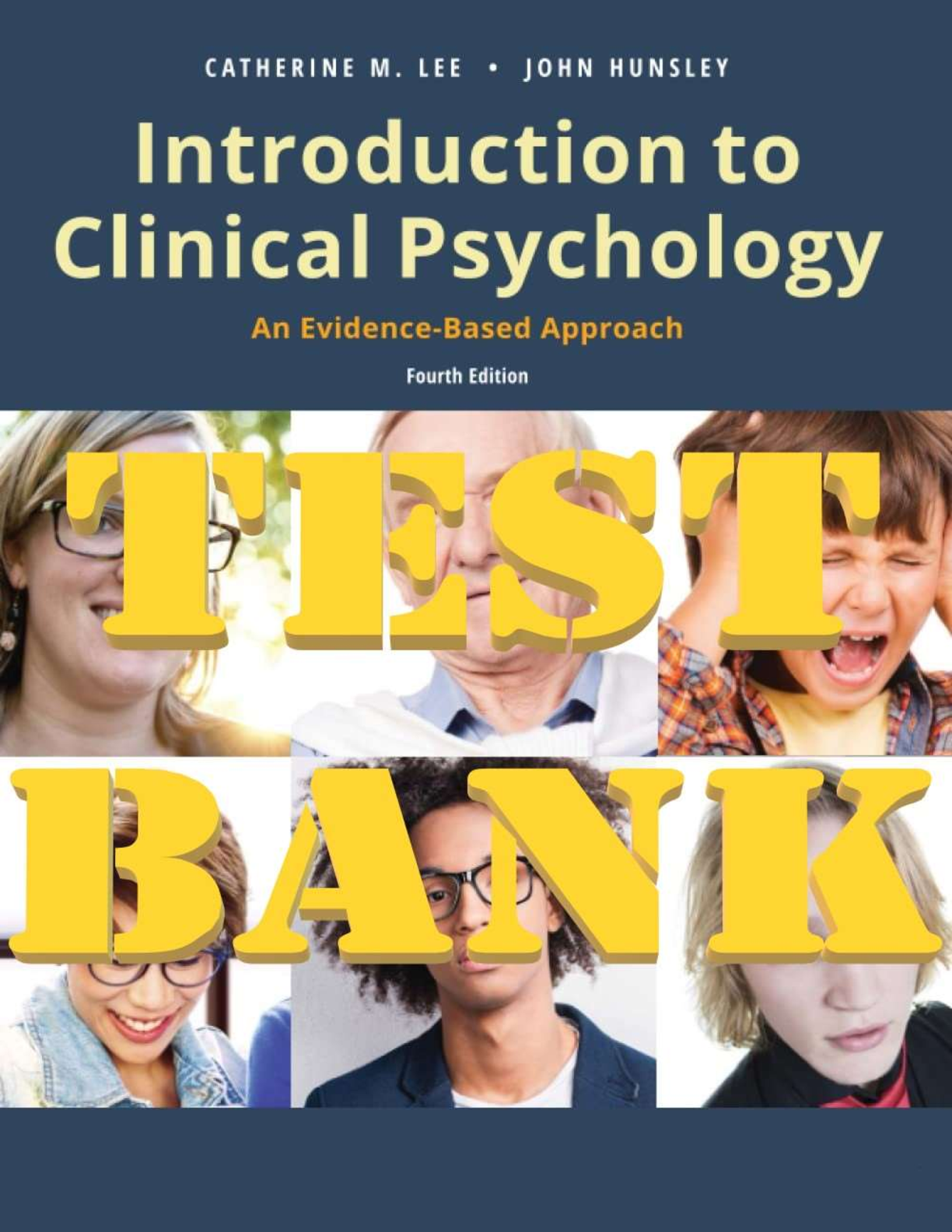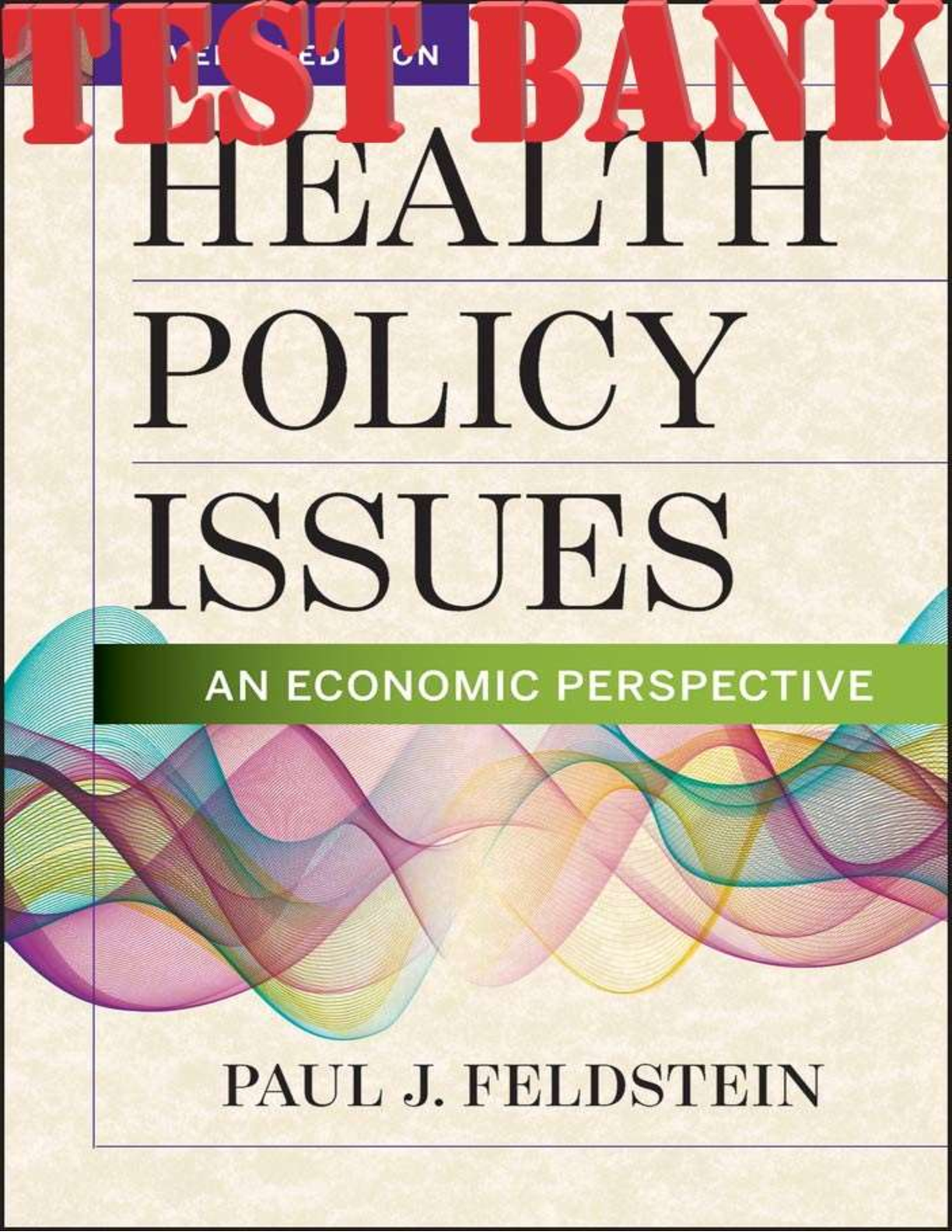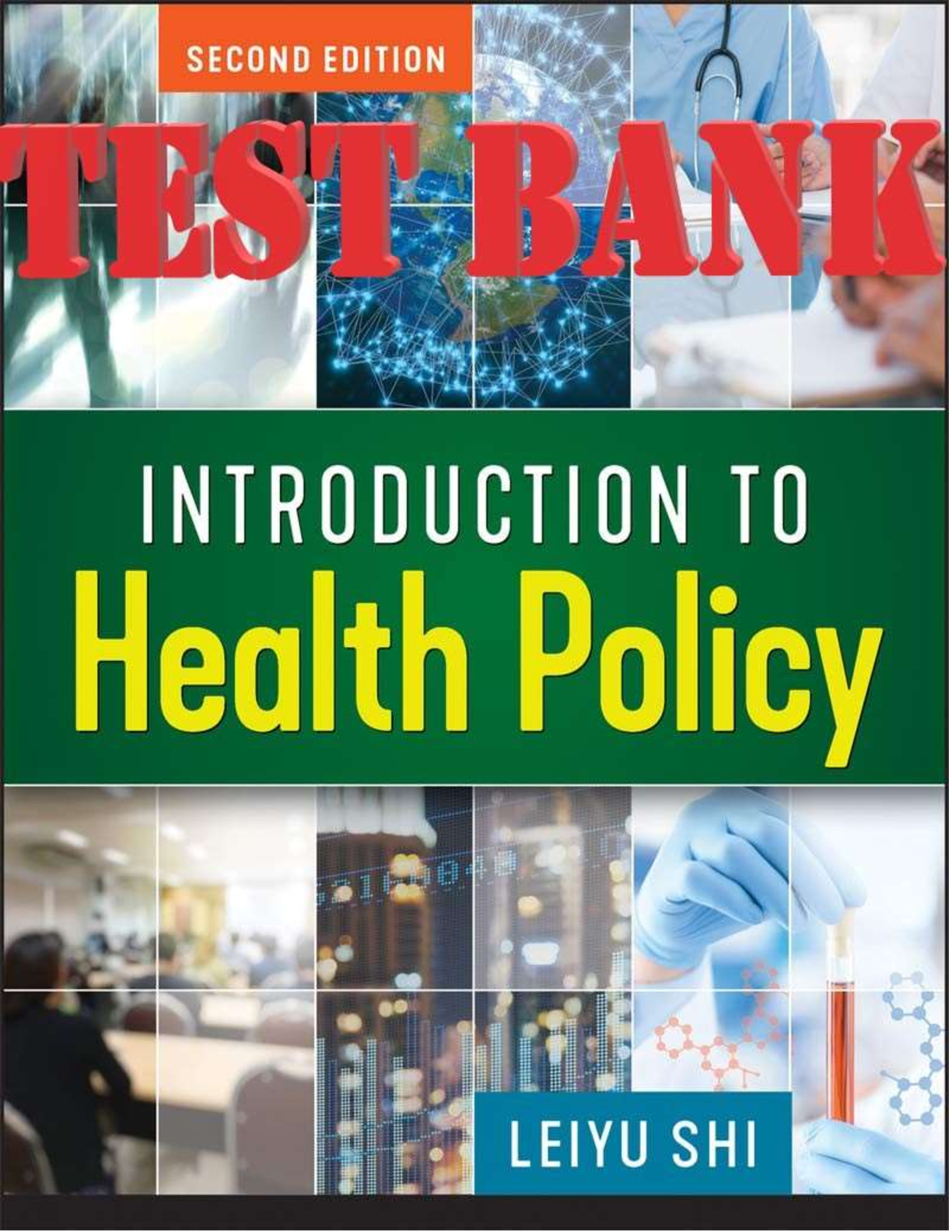*NURSING > TEST BANK > TEST BANK FOR INTRODUCTION TO CRITICAL CARE NURSING 7TH EDITION BY SOLE" CHAPTER 18—GASTROINTESTIN (All)
TEST BANK FOR INTRODUCTION TO CRITICAL CARE NURSING 7TH EDITION BY SOLE" CHAPTER 18—GASTROINTESTINAL ALTERATIONS
Document Content and Description Below
CHAPTER 18—GASTROINTESTINAL ALTERATIONS MULTIPLE CHOICE 1. Sucking and swallowing are automatic reflexes at birth, but they come under voluntary control by how many weeks of age? a. 2 c. 6 ... b. 4 d. 8 2. The nurse will teach the caregivers about the need for small frequent feedings by explaining to them that newborns and infants have: a. a slower metabolic rate than adults c. decreased emptying rate b. slower peristalsis d. a 10–20 ml stomach capacity at birth 3. A parent tells the pediatric nurse about her baby spitting up. The nurse will explain that regurgitation by infants is: a. unusual and must be checked out by the pediatrician b. common because the lower esophageal sphincter tone is decreased c. unusual if it occurs more than twice a day for a period of a week d. common because the baby has a shorter esophageal tube 4. The pediatrician suspects that an infant has a malabsorption disorder or a biliary tract obstruction and orders a fecal fat test. The nurse realizes that this test involves: a. ordering arterial blood collections over a 48-hour period b. feeding a formula high in fat content c. collecting a 24-hour urine specimen d. collecting all stool for 72 hours under cool conditions 5. A parent asks why infants have so many soft stools. The nurse explains that this is caused by infants: a. secreting proportionately more fluids and absorbing less fluids than adults do b. having a totally liquid diet with no bulk or solids of any kind c. having a more sensitive bowel with greater peristaltic waves after any intake d. needing to take milk at such frequent intervals with stools following intake intervals 6. A mother wants to know why she can’t give her one-month-old child cereal as the child seems hungry all the time. Which of the following is the nurse’s best response? a. Until 4–5 months of age, babies have insufficient amounts of the pancreatic enzyme amylase, the enzyme that initially digests carbohydrate. b. The baby would not drink enough milk if he filled his stomach up with cereal and he would not thrive as well. c. Infants are allergic to all food substances except milk up until they are 6 months of age and develop sufficient antibodies. d. Infants get too fat if they are started on cereal before 4–5 months of age and then have a tendency to remain fat throughout life. 7. Infants can absorb the fat in breast milk more readily than fat in formula because human breast milk: a. is a more constant and agreeable temperature b. contains vitamins c. contains lipase d. contains a totally different fat 8. Which of the following is the initial symptom of hypertrophic pyloric stenosis? a. nonbilious vomiting starting between the second and fourth week of life b. cramping and abdominal pain starting around the third day after birth c. refusal to take the bottle or nurse d. a high-pitched and unusual cry 9. The infant with hypertrophic pyloric stenosis will eventually: a. experience spontaneous recovery in 75% of cases b. stop eating and go into a life-threatening decline c. have projectile vomitus propelled up to several feet d. pass an unusually large bowel movement 10. Which of the following is an early warning sign of hypertrophic pyloric stenosis? a. the infant looks and acts somewhat sick b. the infant is hungry and wants to feed again very soon after vomiting c. milk running out of the infant’s mouth periodically during the feeding d. unusually loud burping sounds [Show More]
Last updated: 1 year ago
Preview 1 out of 20 pages
Instant download
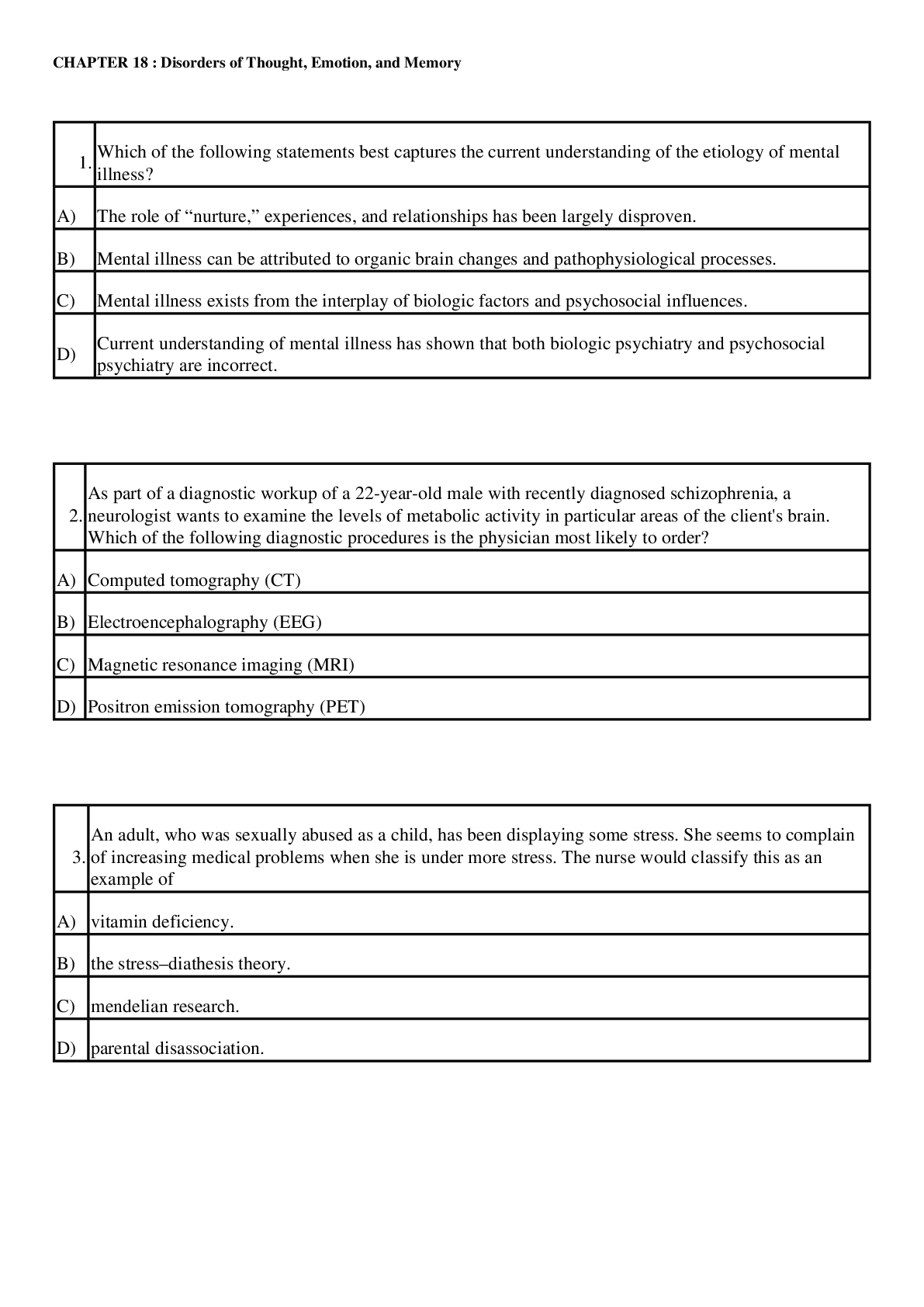
Buy this document to get the full access instantly
Instant Download Access after purchase
Add to cartInstant download
Reviews( 0 )
Document information
Connected school, study & course
About the document
Uploaded On
Feb 27, 2021
Number of pages
20
Written in
Additional information
This document has been written for:
Uploaded
Feb 27, 2021
Downloads
0
Views
107



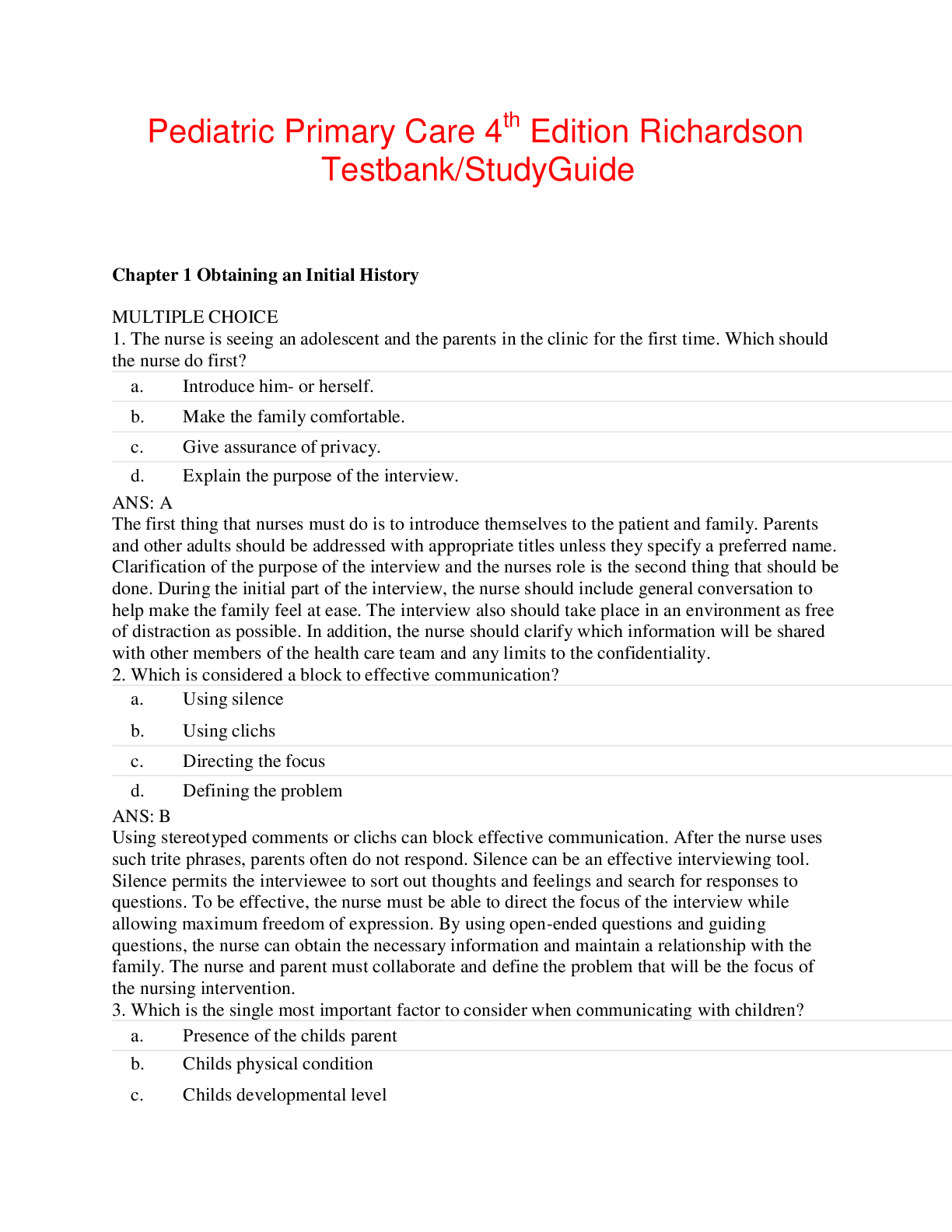

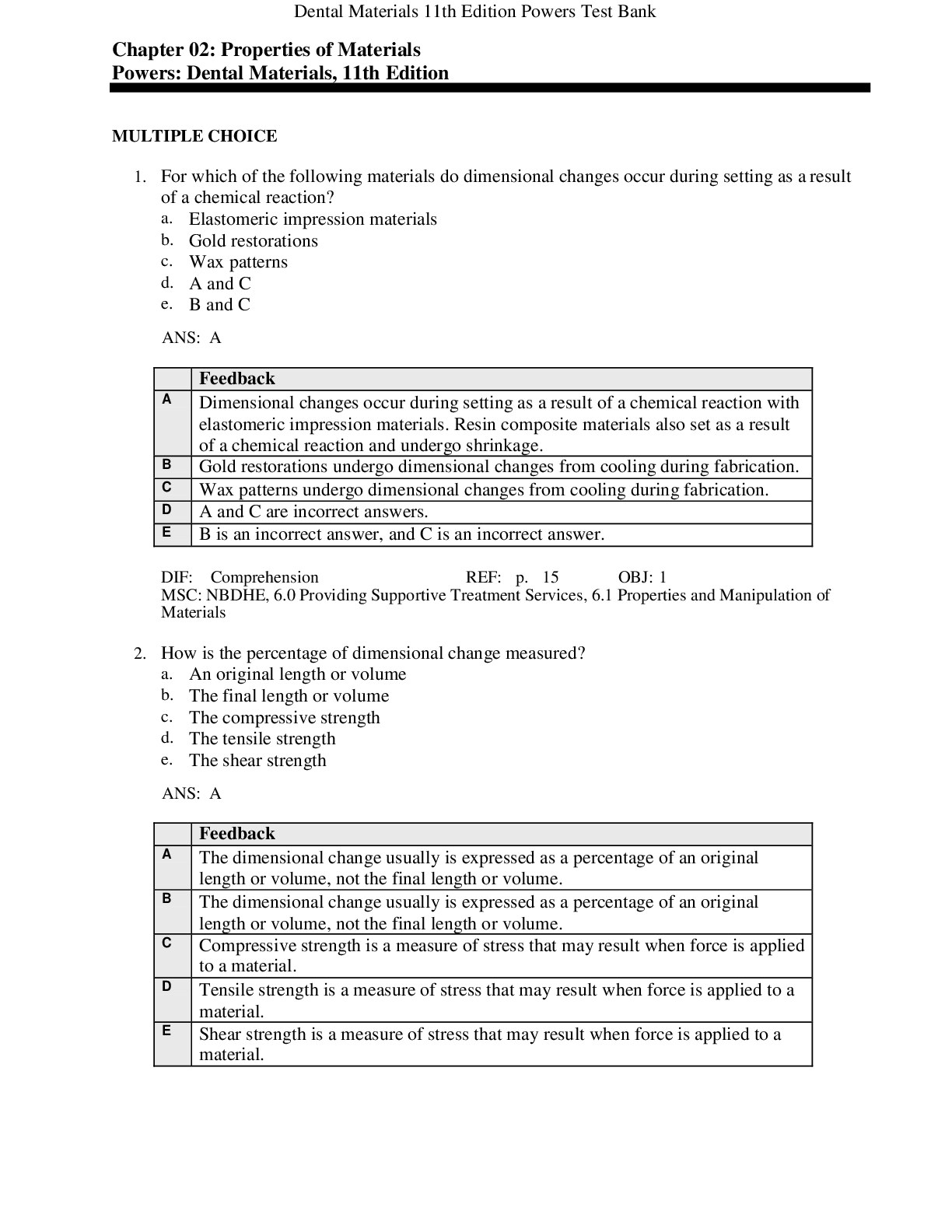
.png)
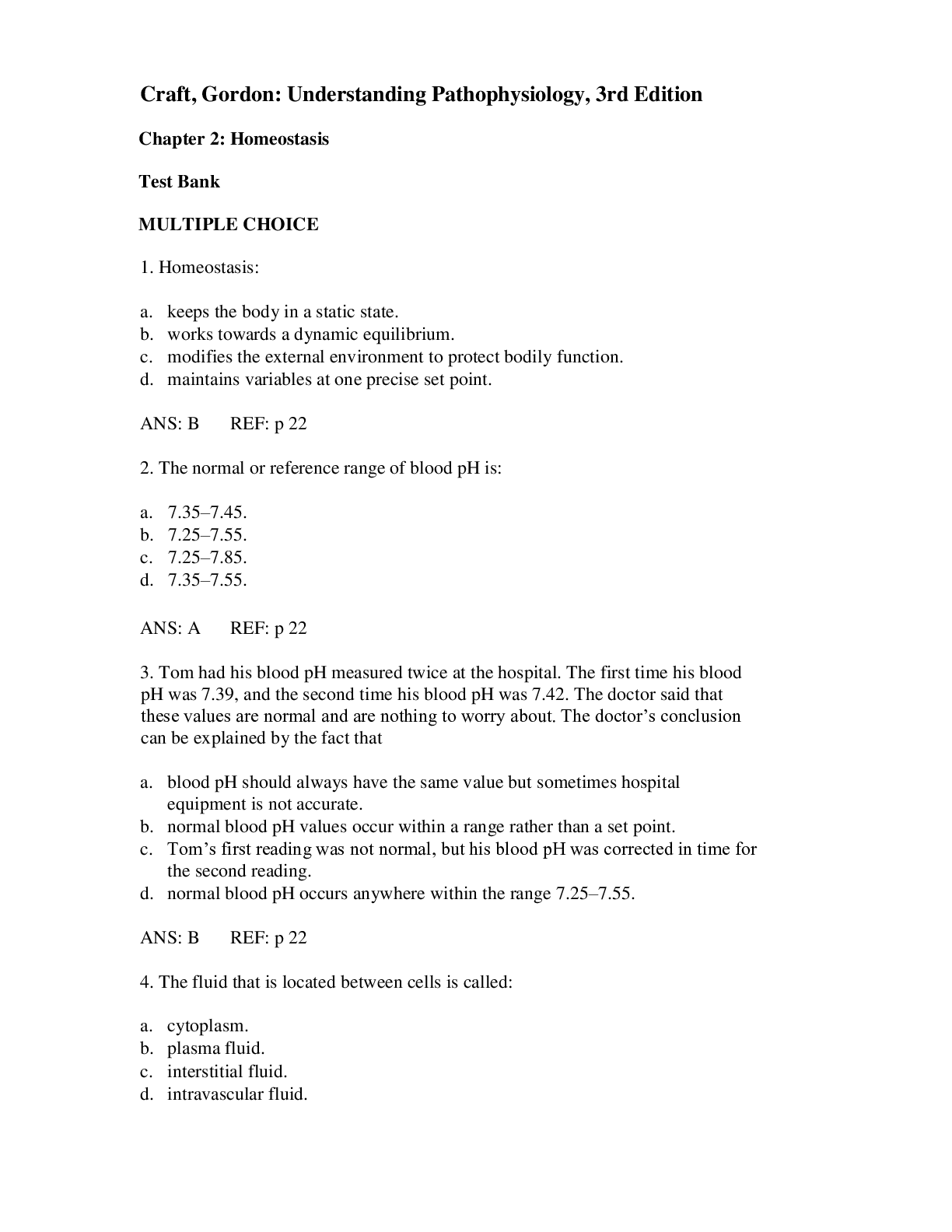



.png)
.png)
